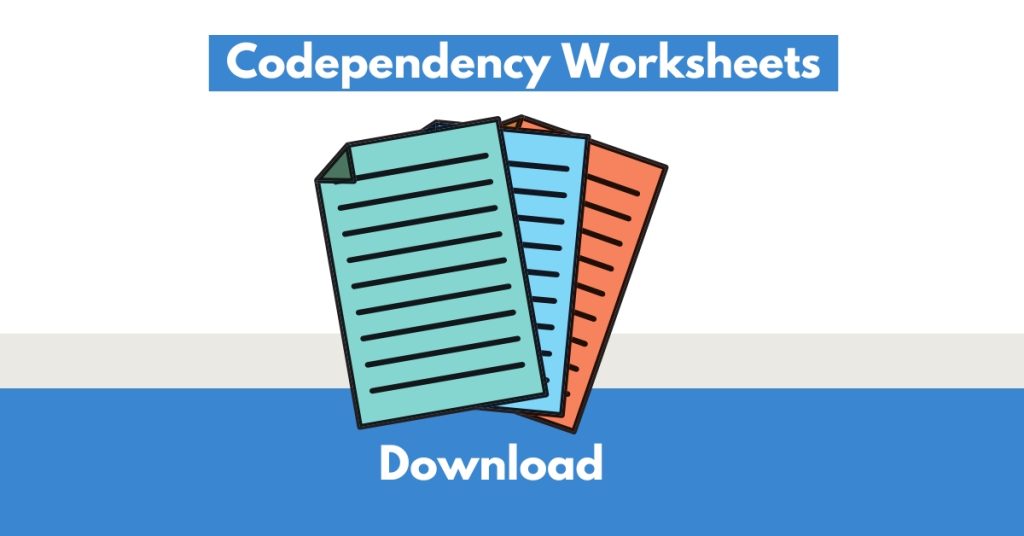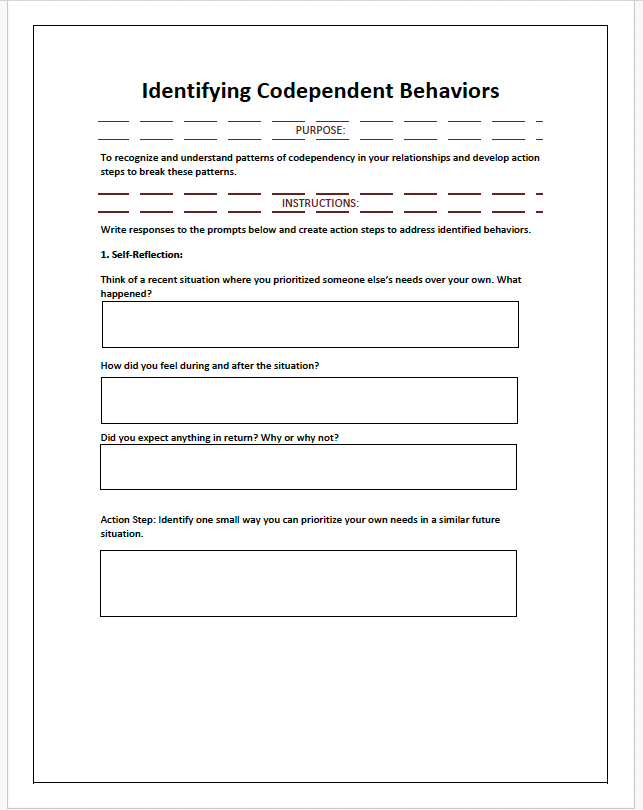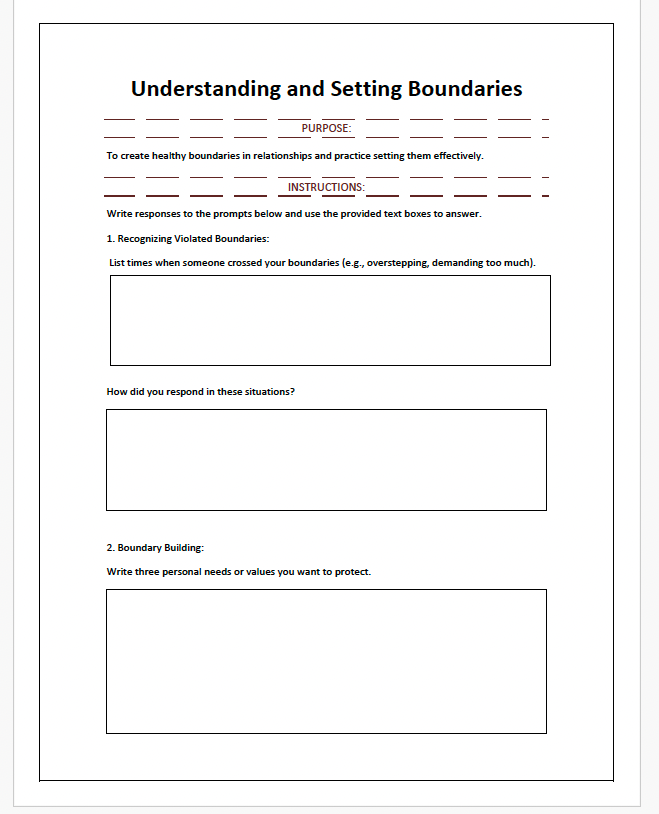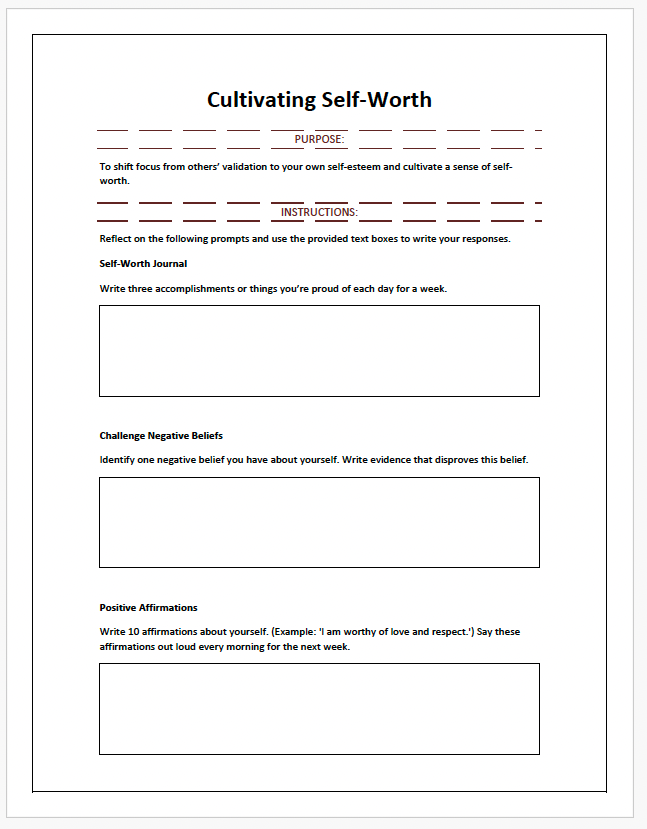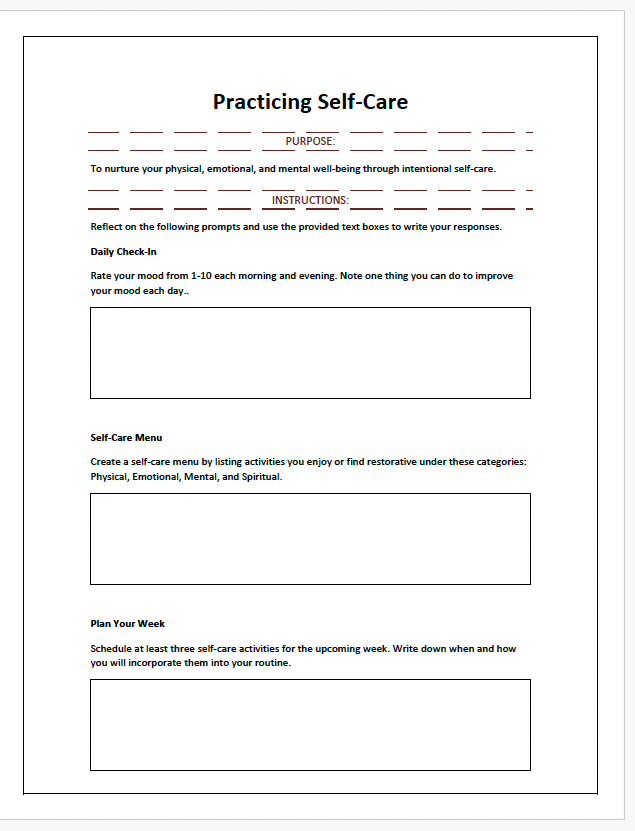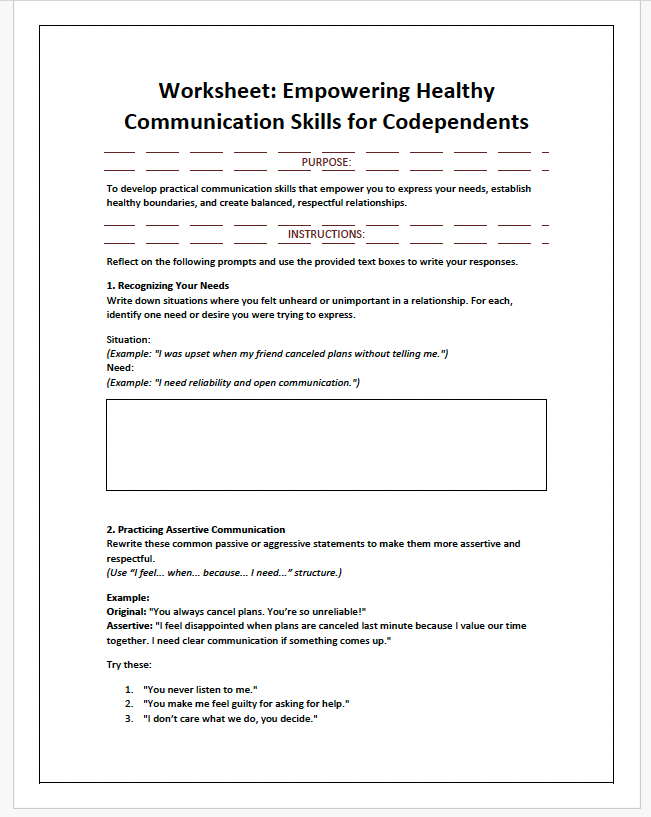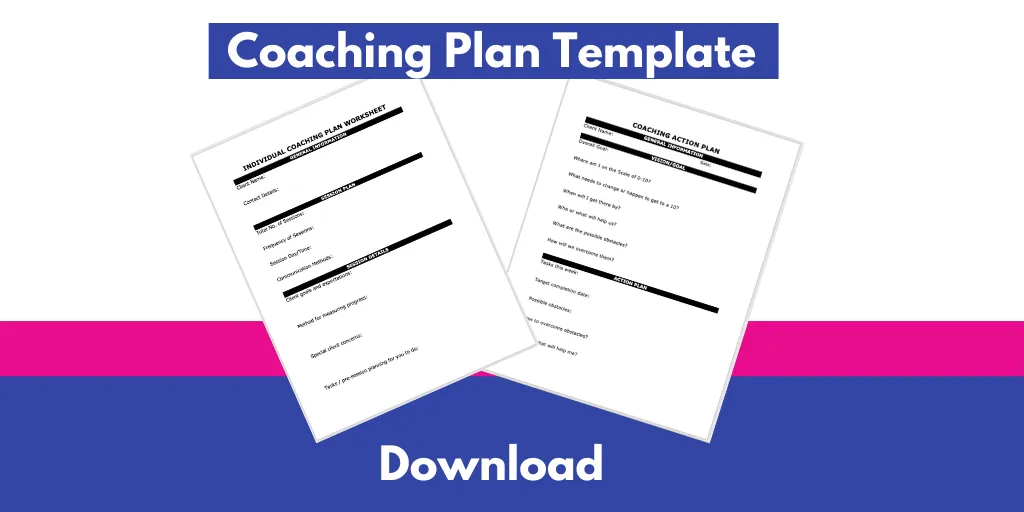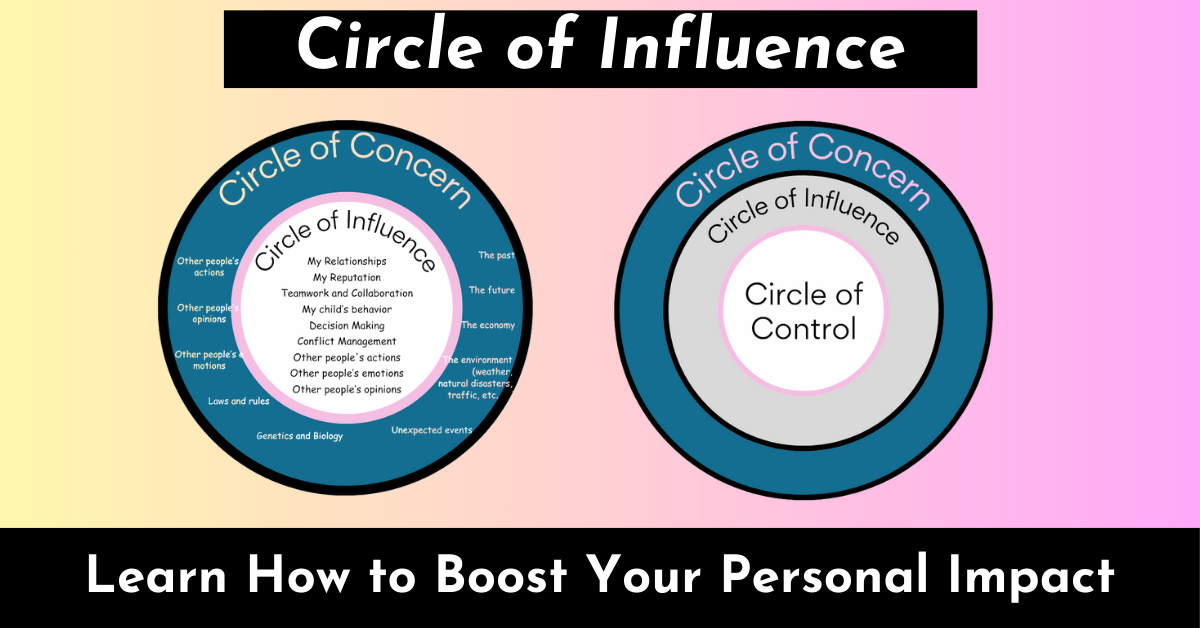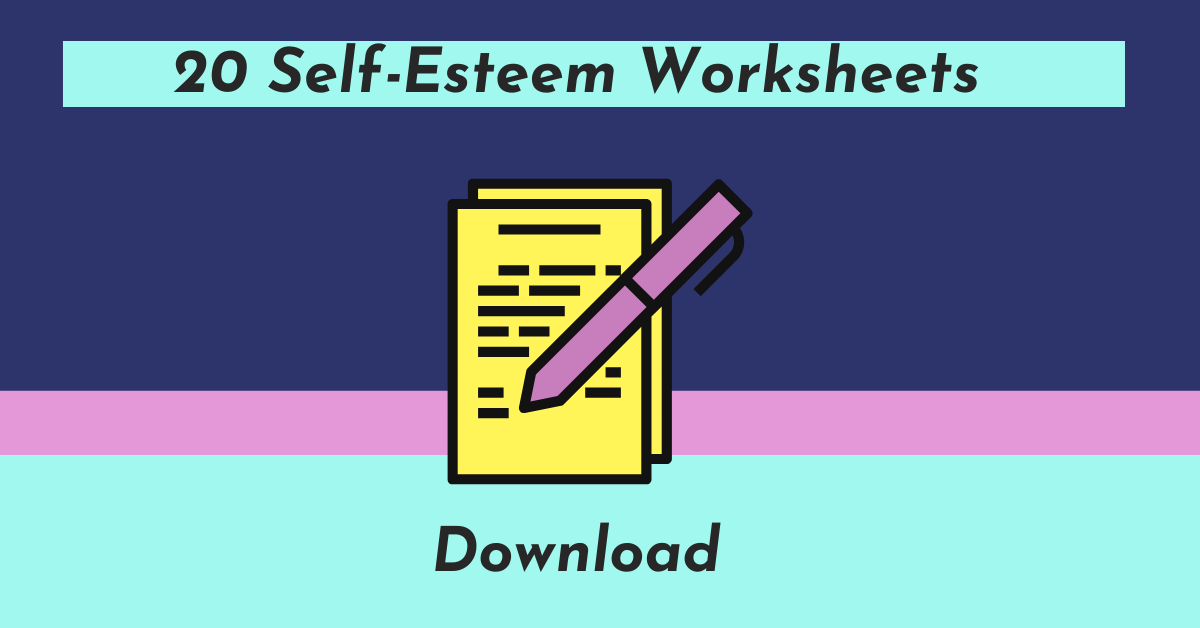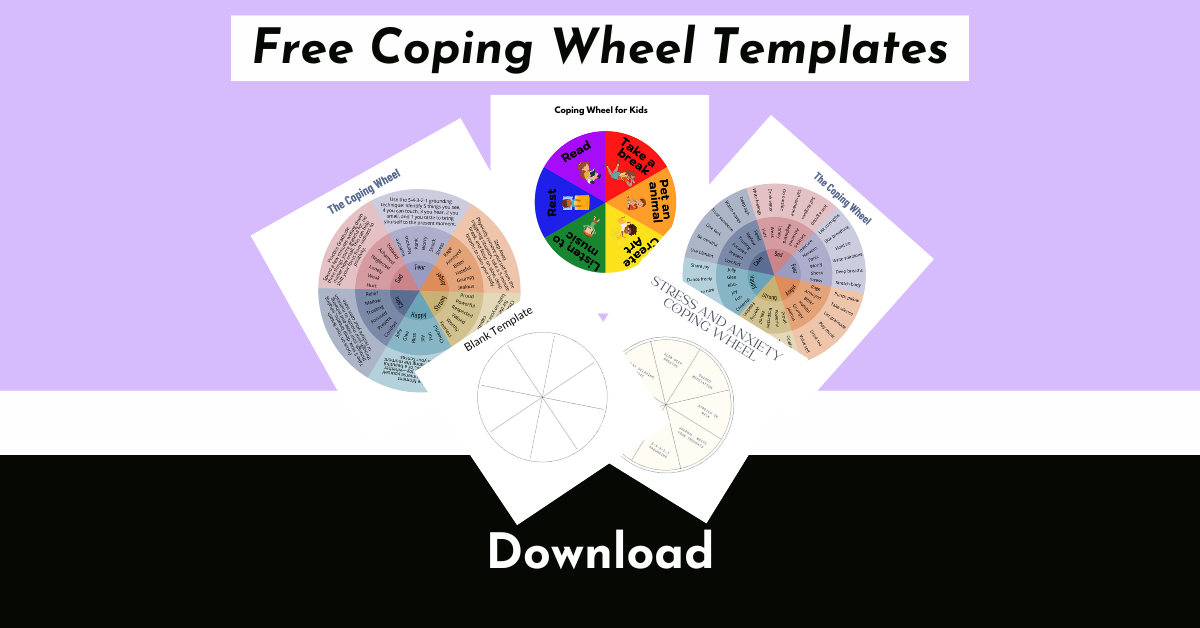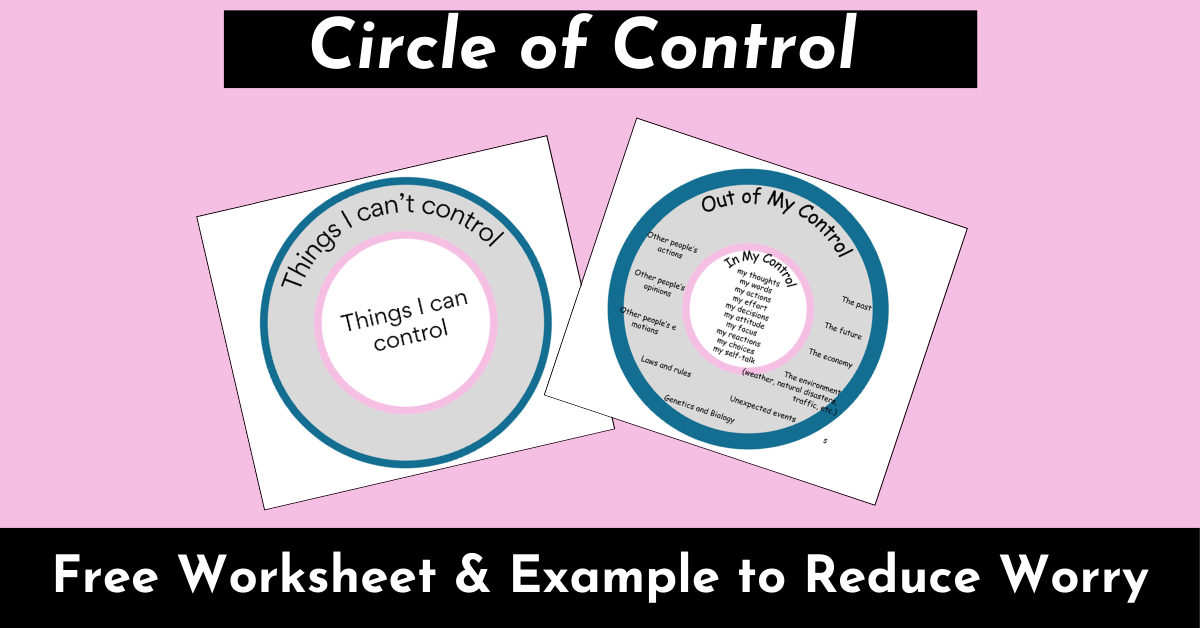Codependency can be an overwhelming cycle that sneaks into someone’s life and affects their mental health without realizing it. This often leads to difficulties in establishing healthy boundaries and balancing emotional needs. While it’s often rooted in deep care for others, codependency can affect self-esteem, autonomy, and relationships in profound ways. The codependency worksheets below can help identify these behaviors and promote personal growth. These worksheets will guide you or your clients through identifying codependent behaviors, setting boundaries, and improving self-worth.
For example, someone who is codependent might feel responsible for fixing others’ problems, struggle to say “no” even when overwhelmed, or suppress their own feelings to avoid conflict. Over time, these behaviors can lead to resentment, burnout, and a sense of personal disconnection.
The good news? Codependency is a learned behavior—and what’s learned can be unlearned.
In This Post
Signs and Symptoms of Codependency
Codependency isn’t just about being a supportive friend or family member; it’s about patterns that go beyond healthy care. Here are some common signs to watch for:
- Difficulty Setting Boundaries: Saying “no” feels impossible, even when a person feels stretched too thin.
- Fear of Abandonment: Constant worry about being left or rejected by loved ones.
- Approval-Seeking: Basing a sense of self-worth on how others perceive or validate you.
- Over-Control or Fix-It Behavior: Taking on responsibility for solving someone else’s issues, regardless of the toll.
- Loss of Identity: Prioritizing others so much that your own interests, values, and needs fade into the background.
Recognizing these behaviors is the first step in overcoming codependency.
Why Self-Reflection Matters
Breaking free from codependency starts with self-awareness. Self-reflection allows us to identify the habits and patterns that no longer serve us.
Through introspection, you or your client can begin to ask important questions like:
- What are my personal boundaries, and how do I enforce them?
- How much of myself am I giving up to meet someone else’s needs?
- What can I do to reclaim my own identity and self-worth?
This is where the power of these codependency worksheets comes in. Structured tools can help explore these questions, step by step, and guide you or your client toward lasting change.
Worksheets Overview
The Role of Worksheets in Recovery
Codependency worksheets play an important role in personal growth. They guide an individual to better self-awareness and self-reflection. They help increase a person’s understanding of unhealthy patterns and behaviors.
Therapists and coaches often use these worksheets to support individual therapy and coaching. Each worksheet targets specific behaviors or thinking patterns. They help identify areas that need change and improvement—self-assessment and recognizing patterns aid in setting realistic goals that promote healthier relationships.
How to Use These Worksheets Effectively in a Session
To get the most out of these resources, follow these tips:
- Set Aside Time: A therapist or coach can use them in a session or give them as a take-home exercise. Your client should dedicate space in their day for reflection—away from distractions.
- Be Honest: These worksheets are a judgment-free zone. Encourage your clients to be authentic in their answers and reflections.
- Take It One Step at a Time: Tackle one worksheet per week or per session to ensure your client has the time to process their insights.
- Implementation: These worksheets are only as effective as your client’s effort to apply their lessons to real-life situations.
- Support: If your client is finding it tough to process their emotions or experiences alone, complete the exercises in session to offer additional guidance.
Download Codependency Worksheets
Our Codependency Worksheets are designed to be practical, user-friendly, and actionable. Here’s what you’ll get with each one:
Worksheet 1: Identifying Codependent Behaviors
Identifying codependent behaviors will help to gain awareness and recognition of specific habits and patterns that indicate codependent tendencies. By engaging with the guided prompts, you will help your client to reflect on how these behaviors manifest in their relationships and daily lives.
Through this process, you will help your client accomplish the following:
- Increased Self-Awareness: By identifying traits like people-pleasing or fix-it tendencies, they will gain a deeper understanding of how these patterns show up in your life.
- Recognizing Unhealthy Dynamics: Identifying codependent behaviors allows your client to recognize the unhealthy dynamics that may be present in their relationships.
- Starting the Journey of Change: Awareness is the first step towards change. By acknowledging these behaviors, your clients can begin to explore healthier alternatives and take proactive steps toward personal growth and transformation.
Through the exploration of codependent behaviors, this worksheet serves as a valuable tool to guide toward greater self-awareness and the cultivation of healthier relationship dynamics.
Focus: Awareness is the first step to change. By identifying traits like people-pleasing or fix-it tendencies, your clients will begin to see how these patterns manifest in their lives.
Download Identifying Codependent Behaviors
Worksheet 2: Understanding and Setting Boundaries
Creating healthy boundaries is vital for personal growth and overcoming codependency. It involves recognizing poor boundaries and learning practical steps to assert one’s needs.
Identifying Poor Boundaries
Poor boundaries often manifest as a constant need for approval or fear of abandonment. A person may struggle to say no or find that they consistently put others’ needs before their own. This can lead to feelings of resentment and burnout.
Some signs of poor boundaries include:
- Difficulty asserting yourself
- Feeling responsible for others’ emotions
- Overstepping others’ boundaries
Recognizing these patterns is the first step toward a healthier relationship with yourself and others. Awareness helps us see where changes need to be made. Being able to identify poor boundaries is crucial for anyone working on codependency recovery.
Steps to Set Boundaries
Setting boundaries requires clear communication and practice. Start by helping your clients identify what is needed from relationships and situations. Write these down to make them more tangible. Knowing personal limits is key. Once they identify them, have them carefully communicate these to others. They should use “I” statements to express their needs respectfully and clearly.
Here is a simple process to follow:
- Identify what you need and where changes are necessary.
- Communicate your needs clearly and kindly.
- Stay firm even if others push back.
Remember, boundary setting is not about controlling others but about taking care of your own well-being. Over time, these efforts lead to stronger self-worth and healthier relationships.
This worksheet guides you in recognizing where your client’s boundaries are weak or non-existent and provides actionable steps for defining and defending them.
Focus: Learn how to say “no” confidently and respectfully, and practice prioritizing your needs without guilt.
Download Understanding and Setting Boundaries
Worksheet 3: Cultivating Self-Worth
Improving self-worth involves overcoming low self-esteem and learning to love oneself more. By boosting self-esteem and practicing self-love, an individual can improve their confidence and feel better about who they are.
Overcoming Low Self-Esteem
Low self-esteem can hold you back. Recognizing strengths plays a big part in building self-worth. Have your client make a list of their achievements and qualities they’re proud of. This helps in switching focus from weaknesses to strengths.
Cultivating a Sense of Self-Love
Loving oneself is about accepting who you are. Self-care is important here. Have your client make time for activities that bring joy and relaxation. They may need to disconnect from stressors and engage in hobbies or relaxation techniques.
Practicing daily affirmations can also boost self-love. An individual can create a list of positive statements about themselves. They should consider using them each morning to start the day positively. Believing in these affirmations over time reshapes your mindset.
Being compassionate toward oneself is key. We should treat ourselves with the same kindness we show others. We should learn to forgive ourselves for past mistakes. This practice reduces feelings of codependency by strengthening the inner self. Have your client nurture their self-worth by being their own best friend.
Codependency often erodes confidence and self-esteem. This worksheet invites you to explore personal core values and strengths, helping to rebuild a strong sense of self.
Focus: Shift the focus back to your own identity, strengths, and personal goals.
Download Cultivating Self-Worth
Worksheet 4: Practicing Self-Care
Practicing self-care is essential for promoting emotional well-being and healing codependency. It involves making intentional choices to improve our well-being. It means putting one’s needs first and recognizing signs of stress. It means being present in the moment and connecting with our feelings.
Therapy and coaching can support this process, offering a space to explore needs and feelings. Your clients should do regular check-ins to ensure they meet their needs. This practice increases self-awareness and personal growth.
Practical Self-Care Activities
Practical self-care involves engaging in daily activities that nurture the mind and body. Exercises such as walking or yoga boost mood and reduce stress. Relaxation techniques like deep breathing or meditation promote calmness and support emotional wellness. These activities also contribute to physical well-being.
Have your client create a list of enjoyable activities to boost their happiness and strengthen their independence.
Ensure a healthy balance by assisting them in scheduling regular breaks. This prevents burnout and maintains energy levels essential for self-care and mental health.
This worksheet focuses on creating a sustainable self-care routine tailored to your client’s needs.
Focus: Explore daily practices that recharge and nurture you, from moments of mindfulness to activities that spark joy.
Download Practicing Self-Care
Worksheet 5: Healthy Communication Skills
Effective communication is key to healthier relationships. When a codependent learns to express themselves clearly and understand others, they will have found the key to breaking codependent behaviors and promoting balanced relationships. Focussing on healthy communication and avoiding enabling behaviors cultivates a supportive environment.
Learning Healthy Communication
Healthy communication involves asserting one’s needs and listening to others. This means speaking up about personal feelings in a calm and clear way. Assertiveness is about respecting both yourself and others.
Help your clients to use “I” statements like “I feel” or “I need,” this focuses on feelings rather than blaming others. This reduces defensiveness and helps others understand the person’s perspective.
Active listening is equally important. Encourage your clients to pay full attention, show empathy, and avoid interrupting. Practicing active listening creates an atmosphere where others feel heard and valued.
Group coaching or support groups can also help with communication. They provide a safe space for practicing communication skills with others who share similar experiences.
Avoiding Enabling Behaviors
Enabling behaviors often arise from a desire to help, but they discourage personal responsibility. By addressing these behaviors, you encourage healthier interactions.
Help your clients set boundaries by knowing their limits and communicating them clearly. It’s okay to say no when something makes us uncomfortable or goes against our principles.
Just like a coach, a codependent should encourage independence by allowing others to solve their problems. Codependents can offer support, but they should not take over their responsibilities. This helps in breaking the cycle of codependency. They also need to watch out for guilt or fear-driven actions.
Effective, honest communication is key to overcoming codependency. This worksheet outlines techniques for expressing yourself clearly, managing conflict, and fostering mutual respect in relationships.
Focus: Gain confidence in sharing your thoughts and feelings while supporting healthy dialogue with others.
Download Healthy Communication Skills
The Path to Healthier Relationships Starts Here
Codependency doesn’t have to define a person’s relationships or life. By taking the time to self-reflect and invest in personal growth, anyone can foster authentic connections based on mutual respect and balance.
Our free printable codependency worksheets are here to guide the transformation, one step at a time. Help your clients take the first step toward reclaiming independence and emotional health.
Ready to Empower Others on Their Journey to Healing?
If you’re passionate about helping others break free from codependency and build healthier relationships, becoming a Codependency Recovery Coach could be your calling. Learn how to guide individuals toward self-discovery, self-worth, and lasting change while building a fulfilling career as a coach.
Start your journey today and make a meaningful impact in the lives of others. Click here to learn more about becoming a Codependency Recovery Coach
